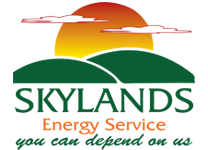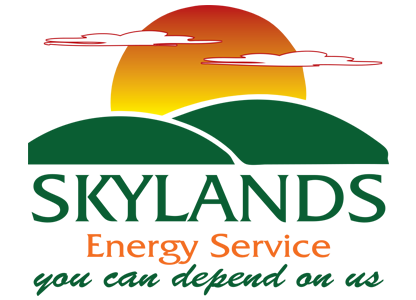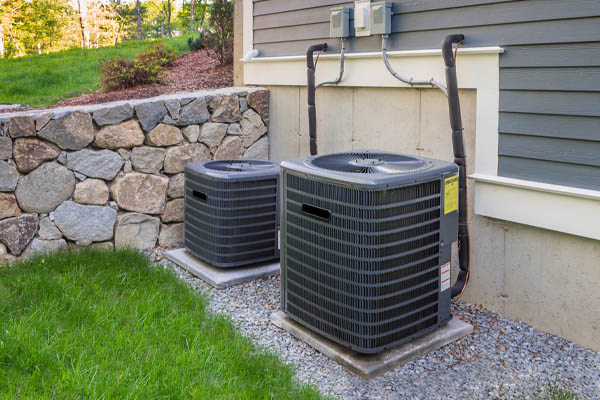
We rely on our air conditioners to keep us cool and comfortable whenever it is scorching hot outside. We only need to push some buttons and wait for a while to enjoy having cold air circulating throughout our home. It is an excellent technological advancement that ensures you do not have to go through unbearably hot days. It protects us from the possible health risks from too much heat and lets us sleep well at night.
If you’ve been using an air conditioner, you might have wondered “How does an air conditioner work?”. Read on to find out everything you need to know about your AC.
How Does An Air Conditioner Work?
Table of Contents
- 1 How Does An Air Conditioner Work?
- 2 Air Conditioner Components
- 3 The Standard Cooling Process Of An Air Conditioner
- 3.1 Step 1: The Thermostat Signals The Need For Cooling
- 3.2 Step 2: The Refrigerant Absorbs Heat From Indoor Air
- 3.3 Step 3: Fans Blow Back Cooler Air To The House
- 3.4 Step 4: Heat Within The Refrigerant Is Released Outdoors
- 3.5 Step 5: Fans Blow The Hot Air To The Surroundings
- 3.6 Step 6: The Cold Refrigerant Goes Back To The Indoor Unit
- 3.7 Conclusion
- 4 Call Skylands Energy Service For All Of Your HVAC Requirements
This article will let you know how an air conditioning system keeps your home cool and comfortable in the summer.
Air Conditioner Components
Before knowing how the cooling process works, we need to familiarize ourselves with the different parts of an air conditioner. Here are its four main components and what they do during the cooling cycle:
1. Air Conditioner Refrigerant
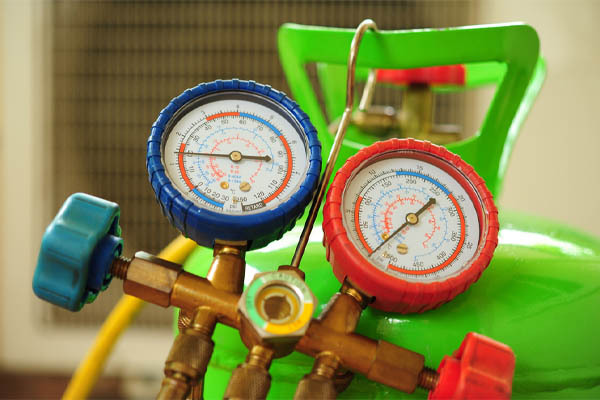
The refrigerant also called the coolant, this component is the system’s lifeblood. It is a compound that removes the heat from inside your house and releases it outside. The cooling cycle describes the refrigerant’s journey and its changes throughout the different air conditioner components.
Related Article: How Do I Know If My Air Conditioner Has A Refrigerant Leak?
2. Evaporator Coils
This is the primary component in your indoor unit that interacts with the home environment. It absorbs the heat, so the coils need to be clean at all times. Air filters should also be replaced regularly.
3. Condenser Coils
It is the main part of the outdoor unit that interacts with the outside surroundings as it is where heat is released. These coils are susceptible to dust, dirt, and other debris, so cleaning them periodically is essential. Make sure to book an air conditioner maintenance before summer.
4. Compressor
This is the pump that moves the refrigerant from the evaporator coils to the condenser coils. It functions much like a heart does in our body.
The Standard Cooling Process Of An Air Conditioner
The following are the steps an AC system goes through during its cooling process:
Step 1: The Thermostat Signals The Need For Cooling
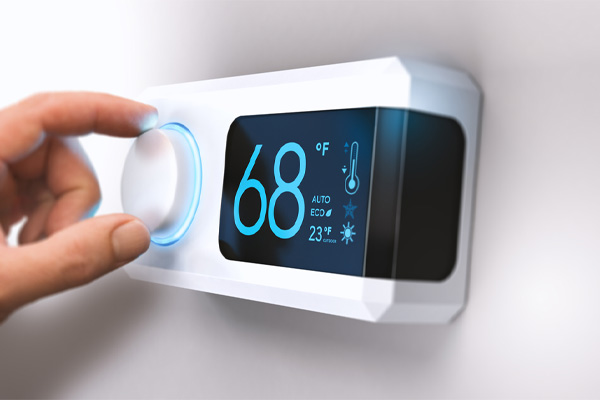
The beginning of the process is when you turn on the cooling system and set the temperature you want via the thermostat. The thermostat has built-in sensors, and it will conduct an ambient temperature check. If it is higher than the set temperature, the thermostat will signal the air conditioner to start the cooling cycle. This will trigger the compressor to turn on, the refrigerant to flow, and the fans to switch on.
Step 2: The Refrigerant Absorbs Heat From Indoor Air
The refrigerant will first go to the indoor unit’s evaporator coils. The chemical is cold at this point, and it will absorb the heat when it makes contact with the hot indoor air. The refrigerant gets warmer as the air gets colder. If there is high humidity in the air, the vapor will condense into water due to the low temperature. Therefore, the air conditioner also functions as a dehumidifier. The AC has a drain pan where the water is collected before it is drained outside via a pipe. This way, the water does not leak into your house and cause structural damages.
Step 3: Fans Blow Back Cooler Air To The House
A fan helps the cold air travel around the evaporator coils and into your home. If you have a central cooling unit, the cold air passes through the ducts and is released via vents in each room. This allows consistent and uniform cooling throughout your home. On the other hand, a window unit or a split system has fans that blow the cold air into the room they are installed in. A mini-split system lets you control the temperatures in each zone in your home so that the varying needs of the occupants are met. It also allows you to switch off the indoor air handler in unoccupied rooms for increased energy efficiency.
Step 4: Heat Within The Refrigerant Is Released Outdoors
The refrigerant cannot absorb heat continuously as it will eventually reach its limit. The hot refrigerant will travel to the outdoor unit to release the heat it has absorbed while it was in the condenser coils. The coolant will remove the heat as long as it is still hotter than the outdoor environment. It will do so until its equilibrium is achieved.
Step 5: Fans Blow The Hot Air To The Surroundings
Your house releases the heat from inside your home to the outside through the air conditioning system. Your AC is equipped with powerful fans that help the refrigerant cool down. The fans blow air across the condenser coils so that the heat is disposed of outside faster. You can feel the surrounding of your outdoor unit get hotter when this happens. Since it is placed out in the open area, the hot air will dissipate freely.
Step 6: The Cold Refrigerant Goes Back To The Indoor Unit
When the refrigerant is cold again, the compressor pumps it back to the indoor unit to repeat the cycle. This process will go on until the thermostat senses that the indoor temperature has achieved the temperature you input in the thermostat. It will stop and rest for a while until the temperature rises again. The cycle will then restart automatically to cool your home again.
Conclusion
Contrary to what many people think, an air conditioner does not produce cold air. It removes heat from your house instead until it becomes cold enough to keep your home comfortable for everyone. It is an innovative and effective concept that has been in use for decades. Newer air conditioners are equipped with technological advances, making them far more energy-efficient than previous models,
Call Skylands Energy Service For All Of Your HVAC Requirements
 Skylands Energy Service provides high-quality heating and cooling services throughout Central New Jersey. Our professionally certified technicians can conduct superior HVAC maintenance, heating and cooling replacements, installations, and repairs. All our skilled, experienced, and knowledgeable technicians can service any HVAC make and model correctly.
Skylands Energy Service provides high-quality heating and cooling services throughout Central New Jersey. Our professionally certified technicians can conduct superior HVAC maintenance, heating and cooling replacements, installations, and repairs. All our skilled, experienced, and knowledgeable technicians can service any HVAC make and model correctly.
Our company offers highly competitive HVAC service rates in the area. We can help you achieve improved comfort, energy efficiency, and cost-effectiveness. If you need repair or replacements, we can recommend the best solutions while staying within budget. We back all our work with a guarantee. Schedule your next service appointment with Skylands Energy Service today. We provide free, in-home estimates.
Contact us now at (908) 707-1776 to find out more!
